
views
Using the "Be a Tree" Method
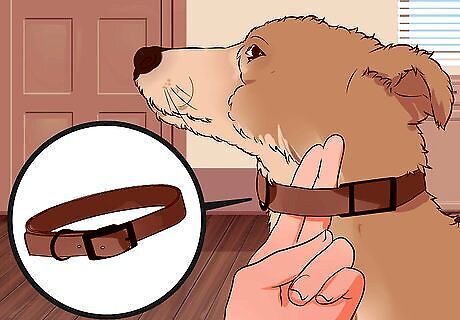
Use a proper collar. Be sure that your dog has a comfortable collar that fits properly. The collar shouldn’t be so tight that it is choking the dog, but should be tight enough so that it does not slide up and down the dog’s neck. You should be able to slide your hand between the dog’s neck and collar when it is secured in place. Many people choose to use a harness instead of a collar. The harness disperses the pressure to the dog's back rather than their neck. This will allow you to train your dog to walk on a leash without having to rely on the choking feeling the dog gets when pulling at their leash.
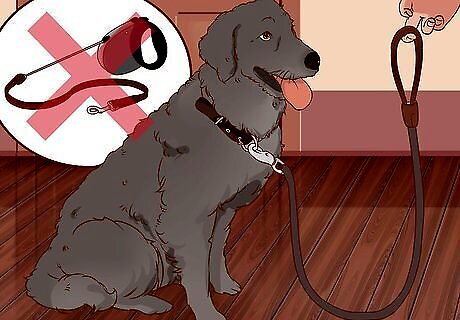
Use the right leash. When using this method for training your dog not to pull, make sure you do not use a retractable leash. This will defeat the entire purpose of the exercise. Use a standard chain or cloth leash.
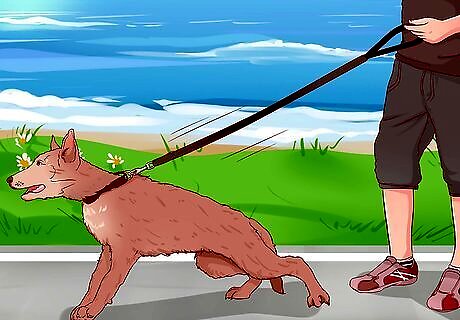
Stop and stand still. Whenever your dog pulls, stop and stand still (be a tree). No matter how hard your dog pulls, don't let them go in the direction they want to go. The reason for this is that if the dog pulls, and you follow them, the dog learns that pulling is a very effective way to get somewhere. It might help to attach the leash to your belt loop using a carabiner. This prevents the dog from getting ahead. It's also far easier to stand still with your hips being pulled rather than your arm.
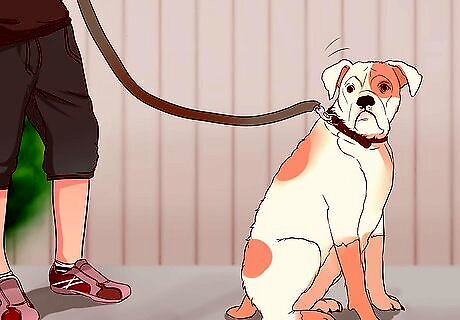
Wait for the dog to respond. Wait until the dog does anything that loosens the leash. The dog might stop pulling by leaning back, sitting, or changing direction. As soon as the leash loosens, you can start walking again. You can encourage the dog to loosen the leash by calling them back to you.
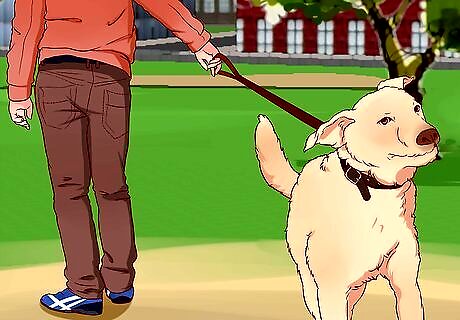
Repeat for the duration of the walk. This method requires a lot of patience! You're trying to teach the dog that pulling gets them nowhere. You have to be consistent and timely. A variation of this method is to walk in the opposite direction whenever your dog pulls.
Clicker Training Method
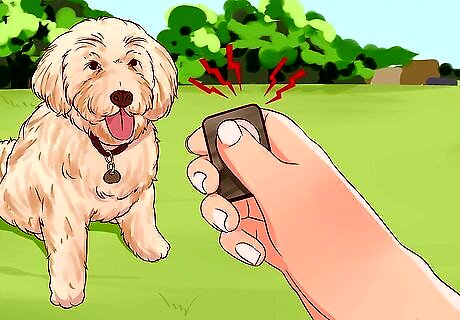
Do some basic clicker training. In order for this method to be effective, you need your dog to respond to the clicker. Every time the dog obeys a command, click the clicker and give them a treat. Be consistent with the clicker so that your dog associates the sound with treats.
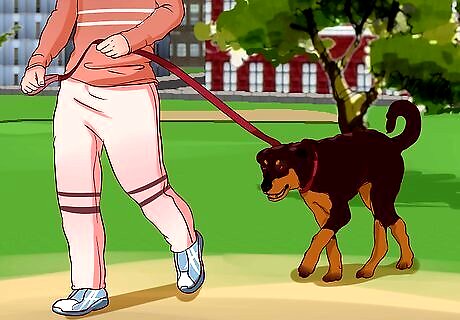
Lead the dog. On the walk, stay ahead of your dog at all times. This will ensure that the dog learns to follow you rather than the other way around.
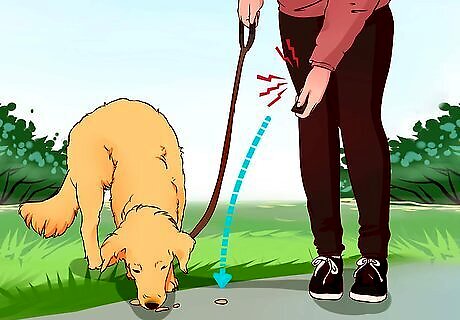
Click and drop a treat. As the dog catches up to you, click the clicker and drop a treat on the ground before the dog passes you. If the dog does not immediately respond to the clicker, give them a verbal command to stop. If the dog responds, click and drop a treat. If the dog does not stop upon your command, do not give them a treat. This will ensure the dog does not associate negative behaviors with treats or the clicker.
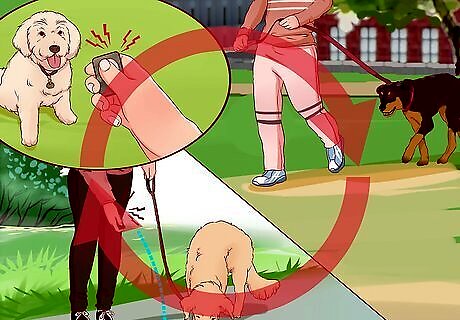
Repeat. Keep repeating this process on your walk. This exercise will train the dog to pay attention to you. Moreover, it will ensure that they learn to stay next to or behind you when walking on a leash.
Utilizing Alternative Methods
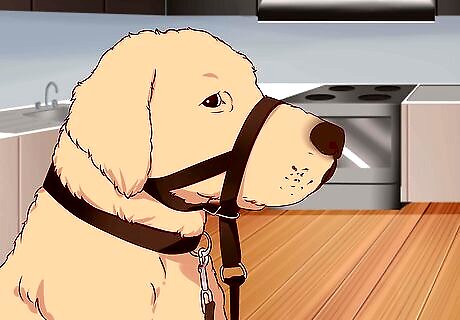
Get a head halter for your dog. The lease attaches to straps around the dog's muzzle so that when the dog pulls, their head will be forced around, facing you. Attaching the leash to the dog's muzzle automatically redirects their focus toward you.
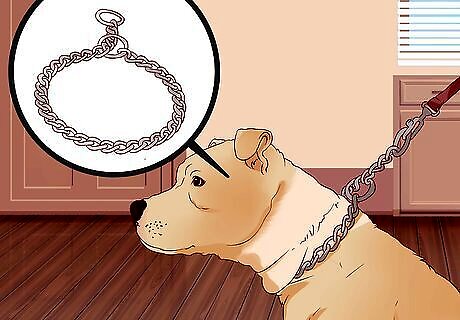
Use a choke collar. When training your dog, try using a slip or choke collar under the supervision of a trained expert. These collars will tighten around the dog’s neck if they pull on the leash, effectively choking them. Using these collars for training will help your dog associate pulling with being choked. While these collars can effective for training a dog, many experts argue that they are dangerous or unnecessary. It is recommended that you never use a choke collar unless under the direct supervision of a licensed animal behaviorist. These collars work by using negative reinforcement. Most dog training experts suggest that your dog will respond better to positive reinforcement than negative reinforcement- so keep that in mind when considering using this training tool. These collars are for training only. Never leave this collar on your dog or use it as a substitute for their regular collar. These collars are controversial, so consider the arguments for or against choke collars before trying this method.
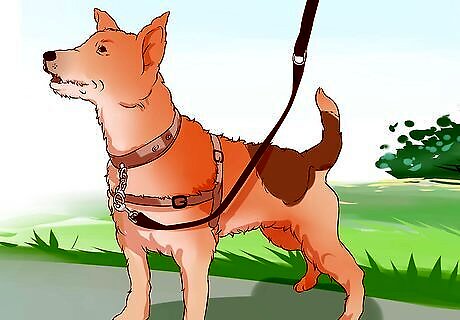
Try a halti dog harness. These harnesses attach to the dog's collar with a clip and are fastened across the dog's underbelly. It works through attaching your leash to the front chest strap, which means you will gain more control over your dog. When your dog pulls on their leash, they will be guided back towards you, naturally and gently discouraging them from pulling. The leash attachment at the chest prevents putting any pressure on your dog’s throat and neck, which is especially important as this could cause tracheal damage.
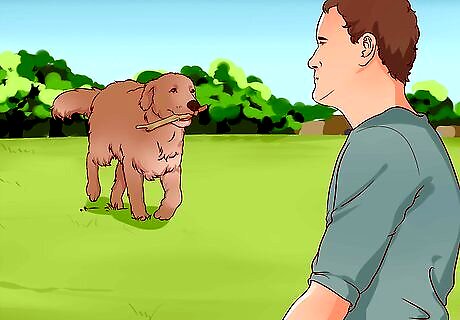
Wear the dog out. Run the dog to tire them out before attaching the leash and going for a walk. A tired dog is far more manageable and will be more responsive to your commands during the walk. Try playing fetch in the yard for 10 minutes before going on a walk.
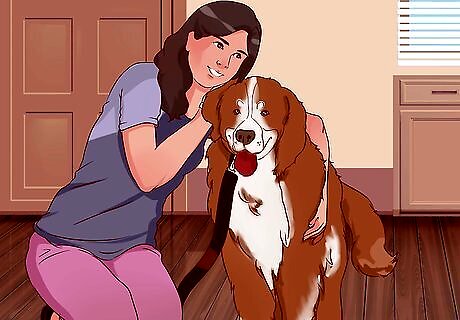
Use positive reinforcement. End training sessions on a happy success moment. Don't end it when your dog is messing up. Success is continuing to make progress. Never allow the dog to remain unhappy at the end of your training session.

















Comments
0 comment